Meet Bugatti's new Tourbillon: a luxury watch-inspired hybrid that hits 1,775bhp and rips up the performance car rulebook
A $4 million work of art that melds watch-making and hypercars
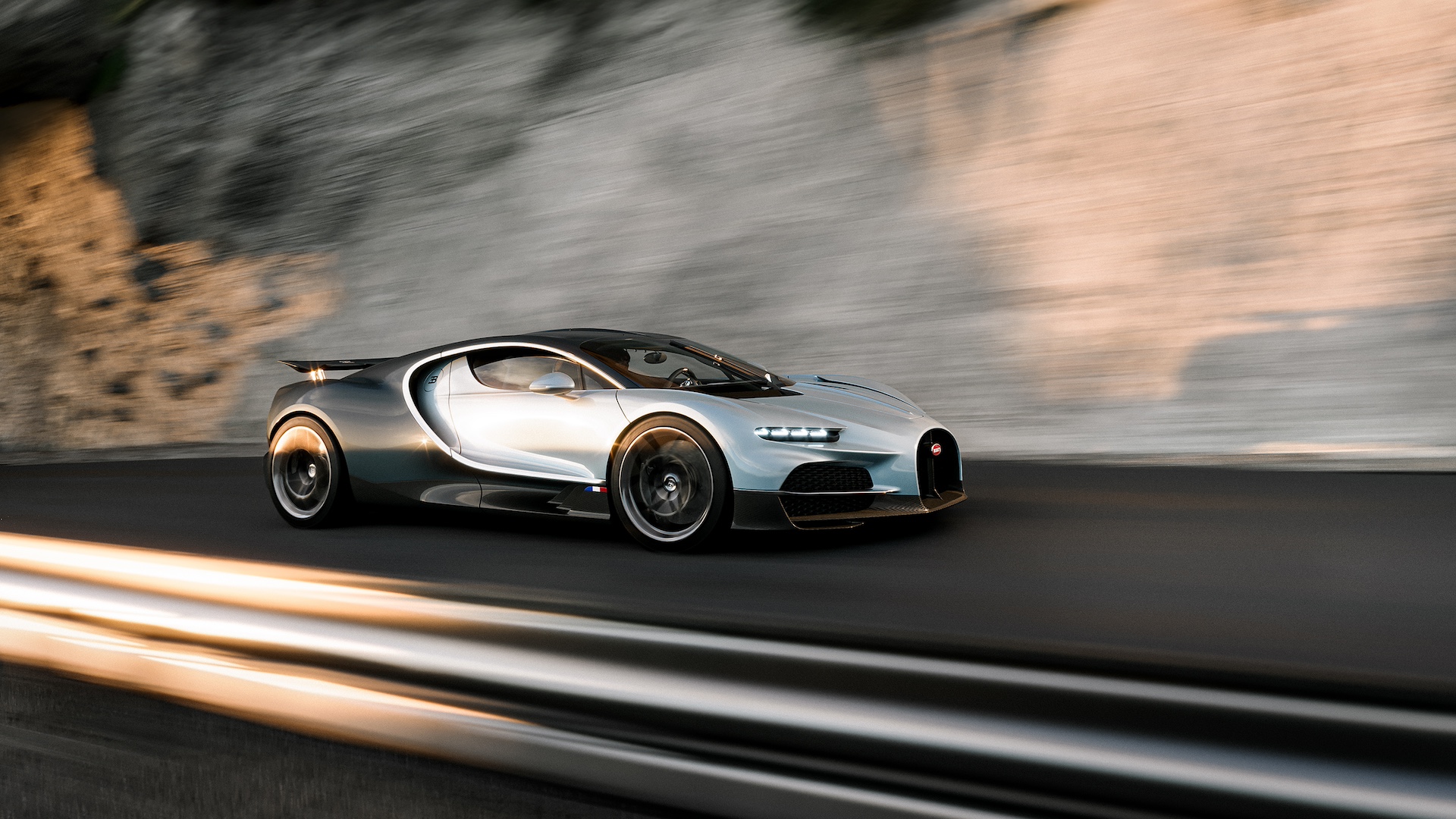
Buckle up, because Bugatti has just whipped the silk sheet from its latest automotive creation, which takes inspiration from luxury watchmaking, can tickle 280mph without breaking a sweat and packs more interesting mechanical features into its svelte frame than some automakers manage in a lifetime.
The successor to the 300+mph Chiron has been christened Tourbillon – a mechanism typically found in ludicrously expensive, high-end mechanical watches that counters the effects of gravity to ensure accurate timekeeping.
It’s a perfectly apt name, as Bugatti's Tourbillon goes heavy on beautifully crafted, exposed mechanical movements that can be found everywhere, from the breathtakingly analogue instrument binnacles to the 'skeletonized' central console.
But before we get into the sculptural significance of this car, it’s probably best to runs some numbers: a Cosworth-developed 8.3-liter naturally-aspirated V16 engine screams its way to 9,000rpm, with power pumped through an eight-speed dual-clutch automatic gearbox.
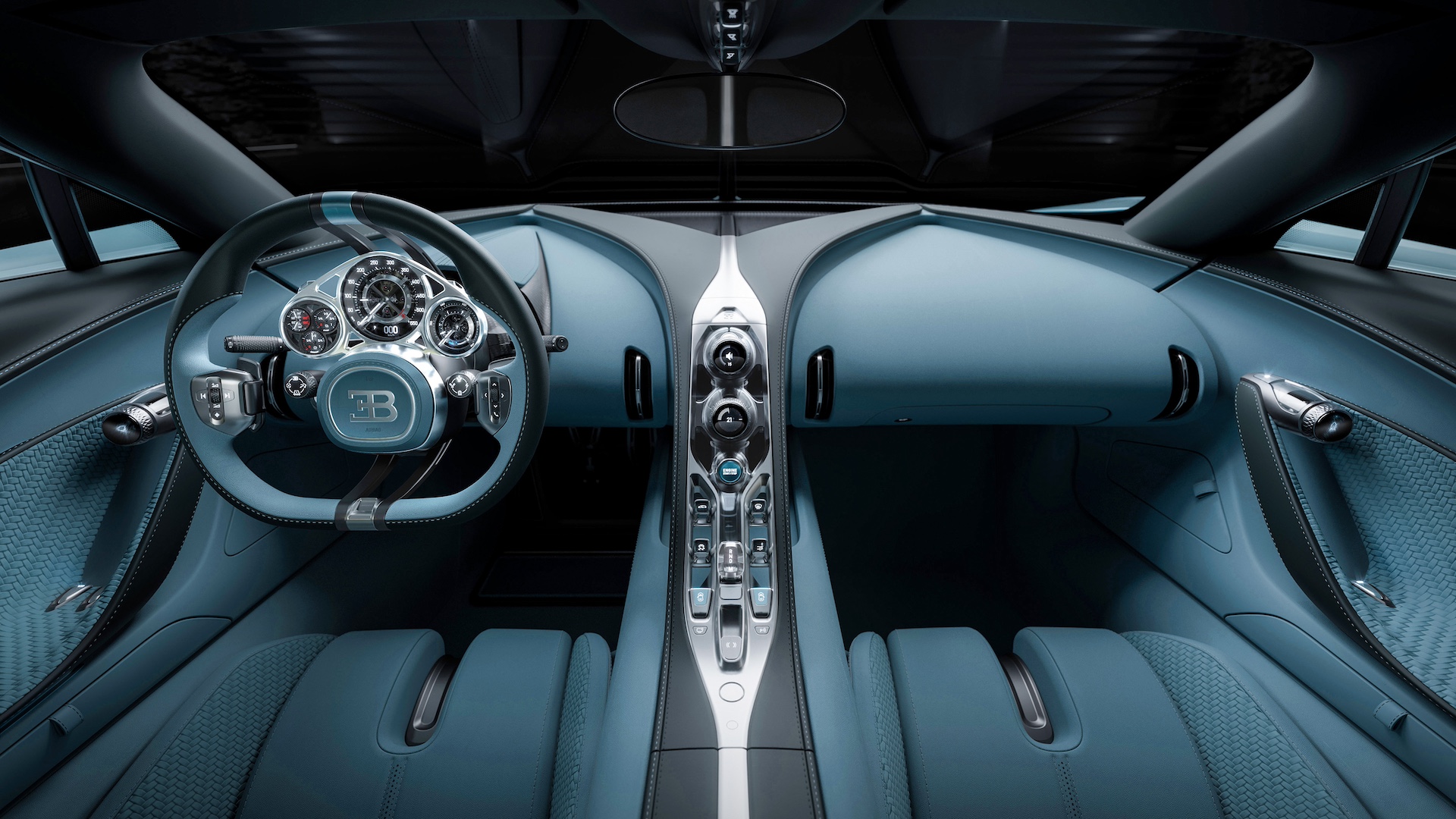

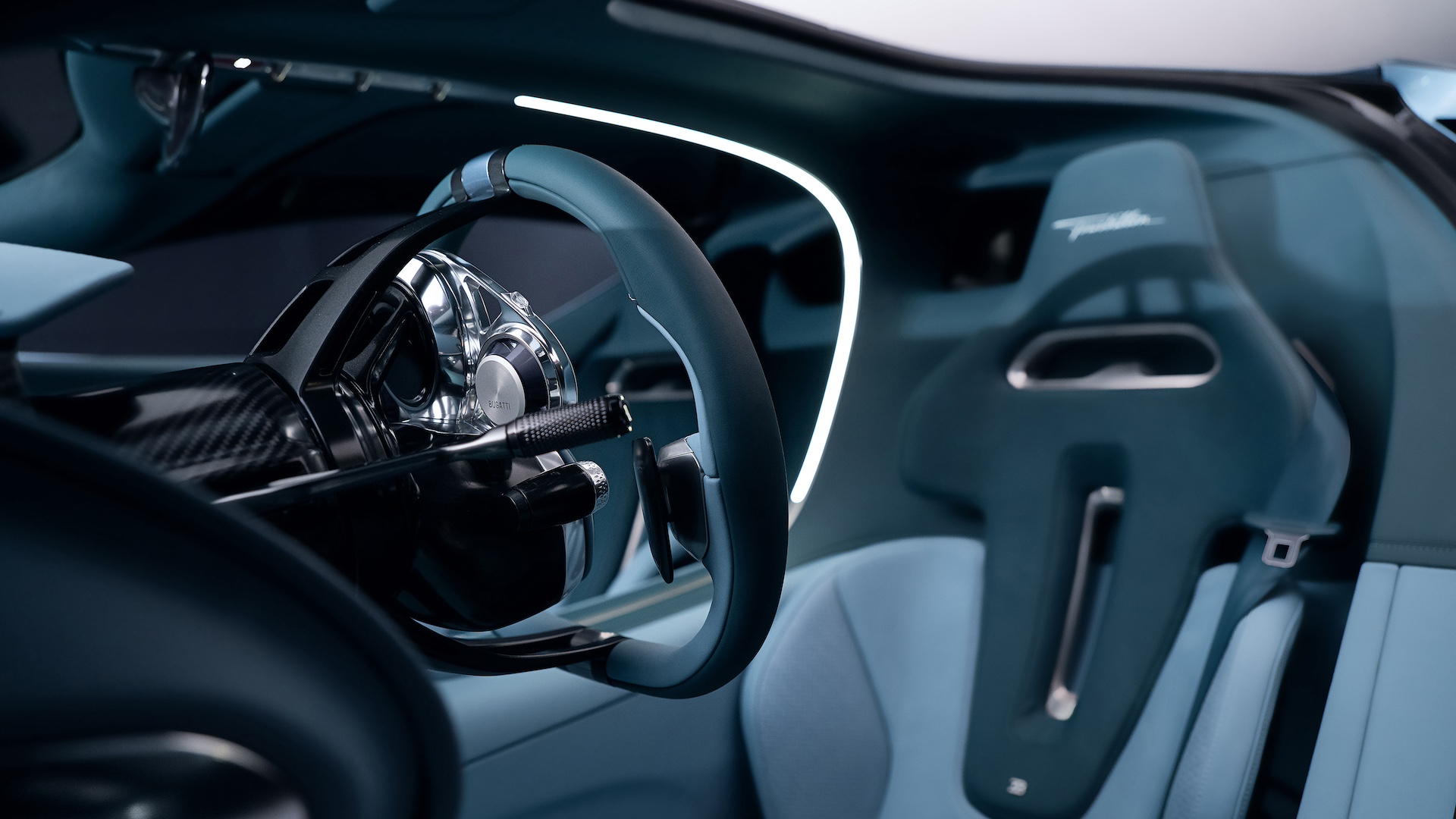
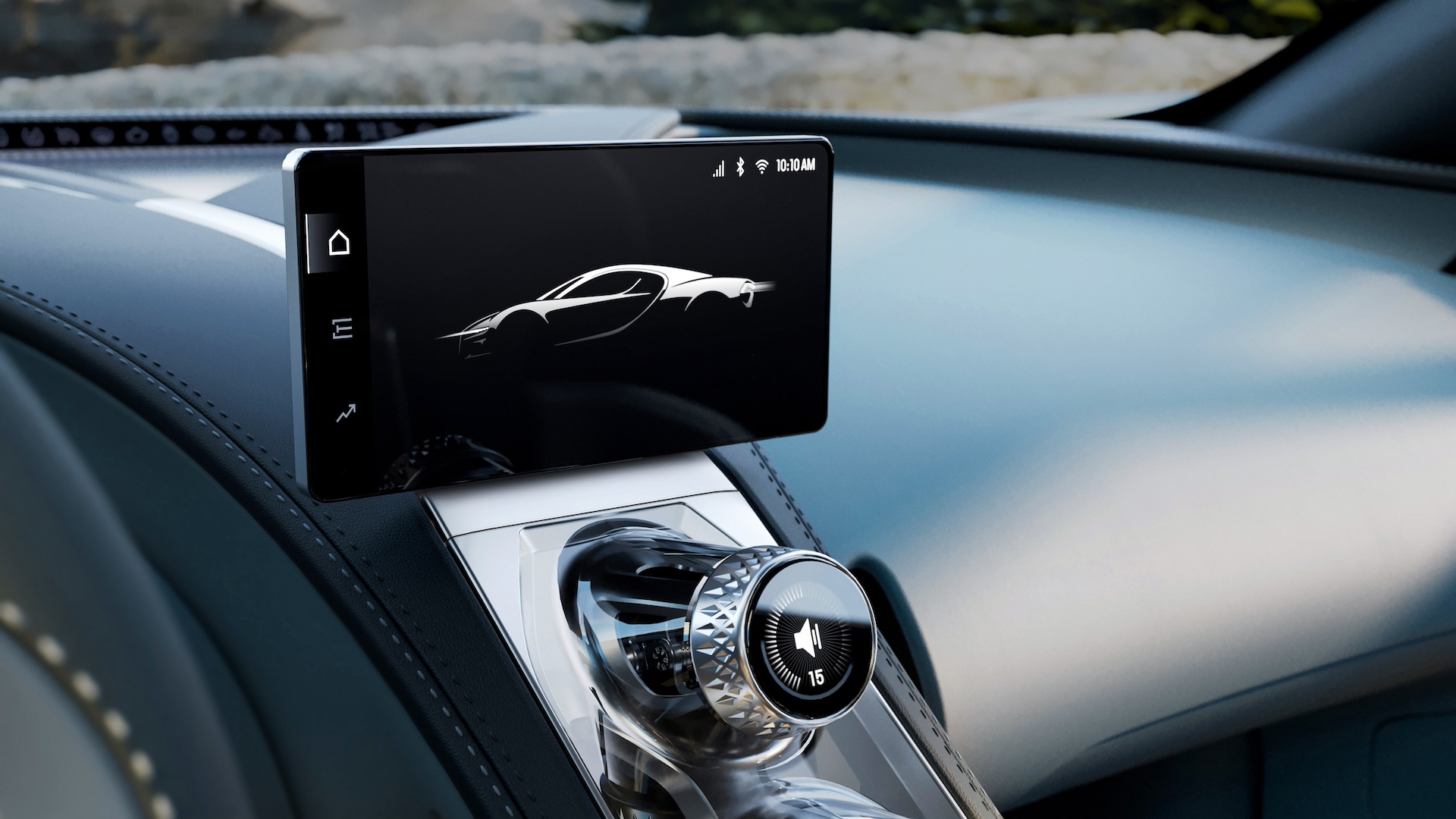

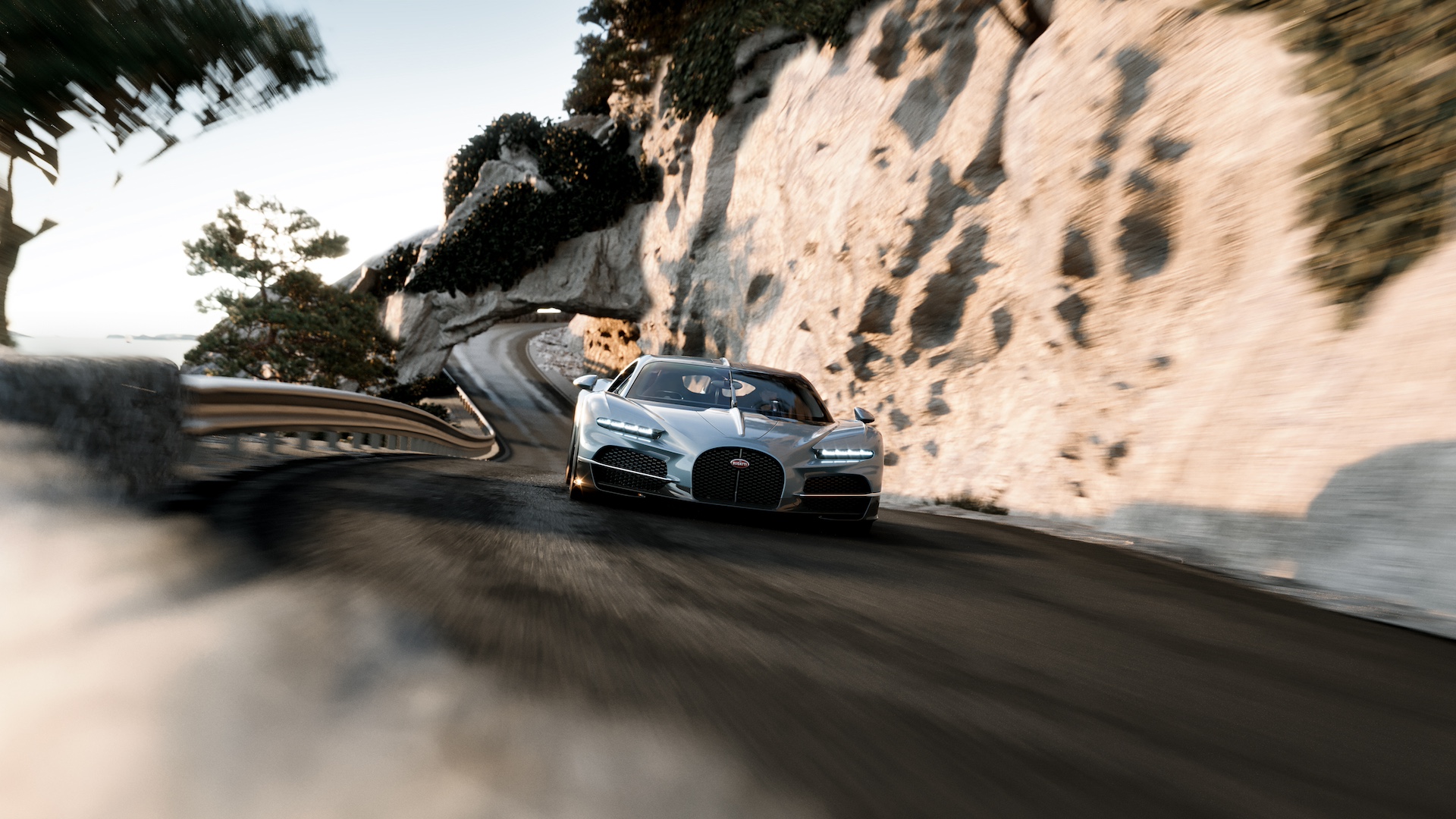
The engine alone produces over 1,000bhp, but new Bugatti boss Mate Rimac – he of the Rimac Nevera fame – has also introduced a 25kWh battery pack to proceedings, which powers three electric motors (two on the front axle, one on the rear) for a total power output of 1,775bhp.
Those figures are frankly incredible, but then consider that the Tourbillon can manage around 37 miles in pure EV mode, with around 789bhp to play with – that’s more than a standard Porsche Taycan, before you’ve even bothered firing up the angry V16 combustion engine.
Bugatti is currently being coy about potential top speeds, hedging its bets with a 277mph limit for the time being. But this model accelerates from zero to 62mph in "less than two seconds", which is faster than a Chiron (2.4 seconds), and cracks the 0-186mph sprint in under ten seconds, compared to the 13.1 seconds of its predecessor.
Get daily insight, inspiration and deals in your inbox
Sign up for breaking news, reviews, opinion, top tech deals, and more.
It won’t take an engineering genius to work out that Tourbillon has plenty left in the tank to snatch that production car top speed record when the time is right.
Beauty in every corner
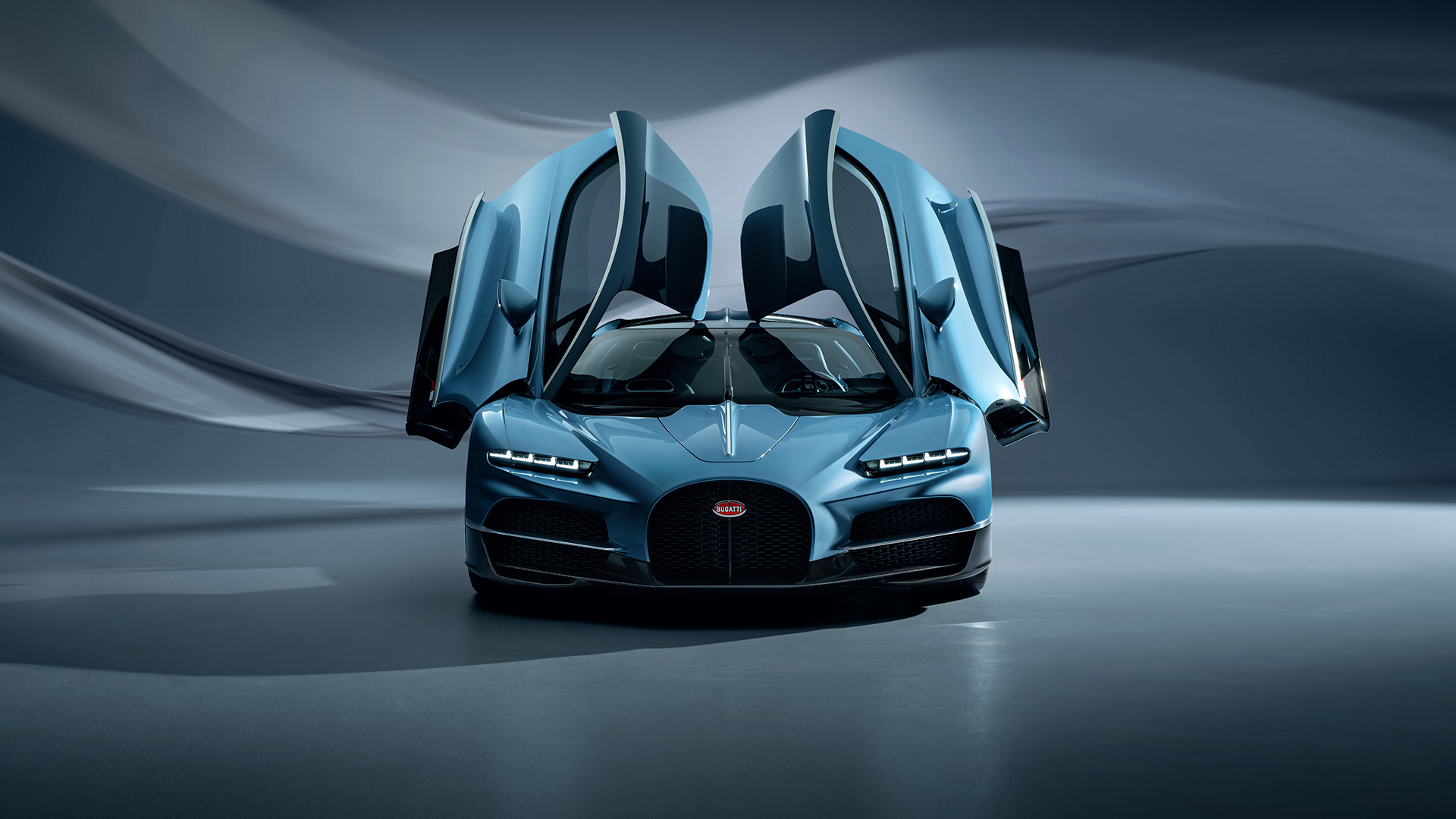
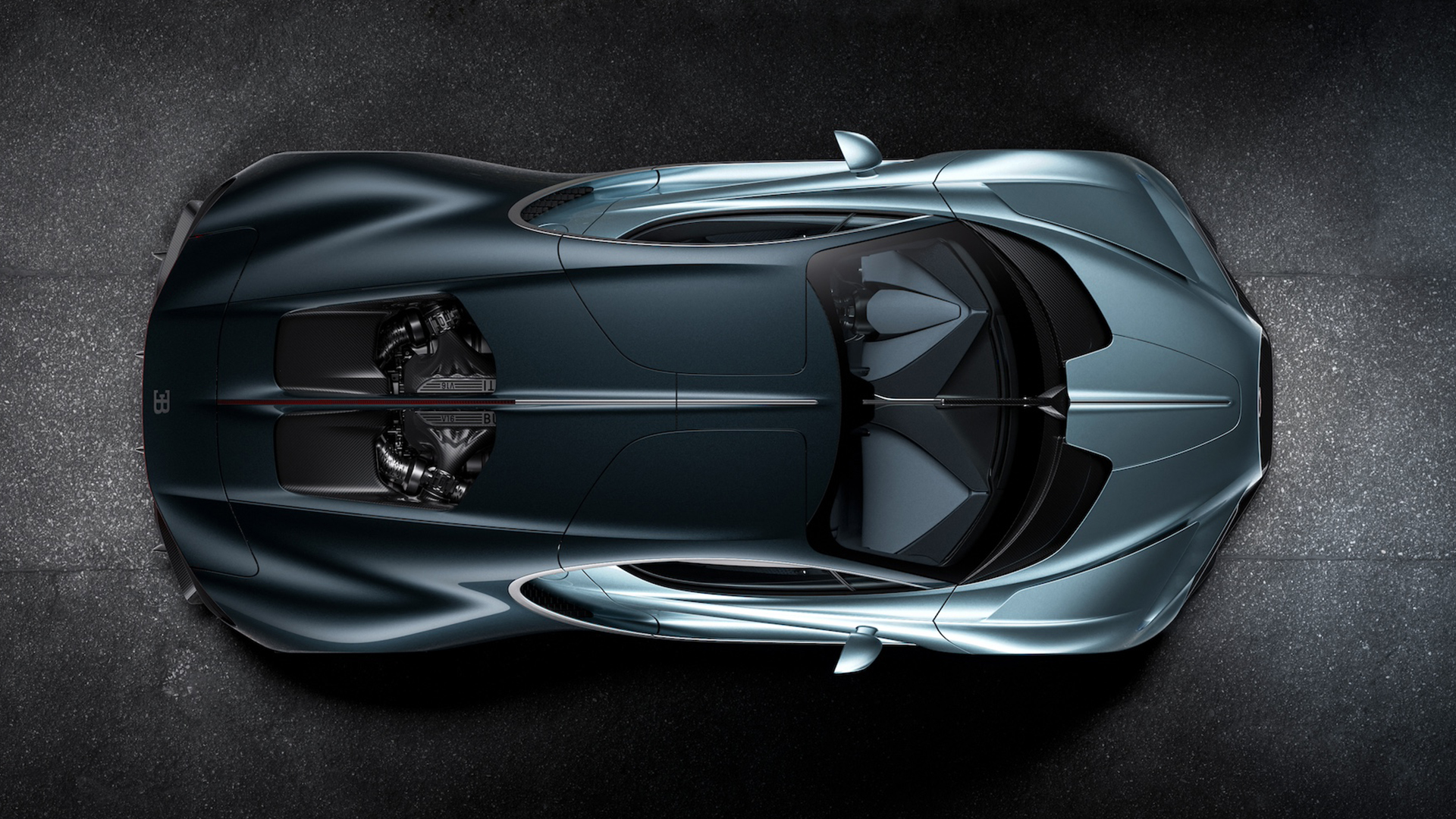

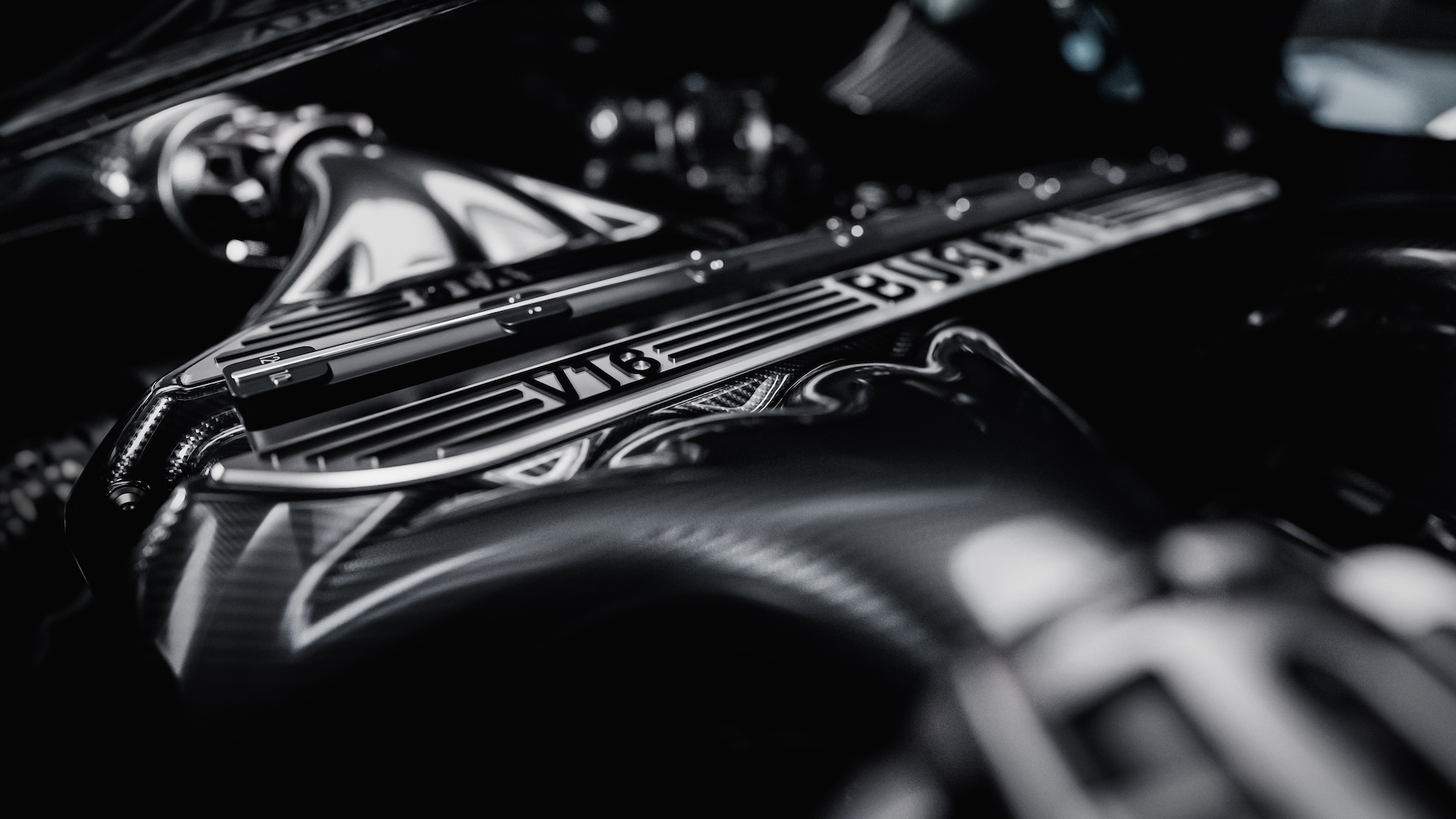
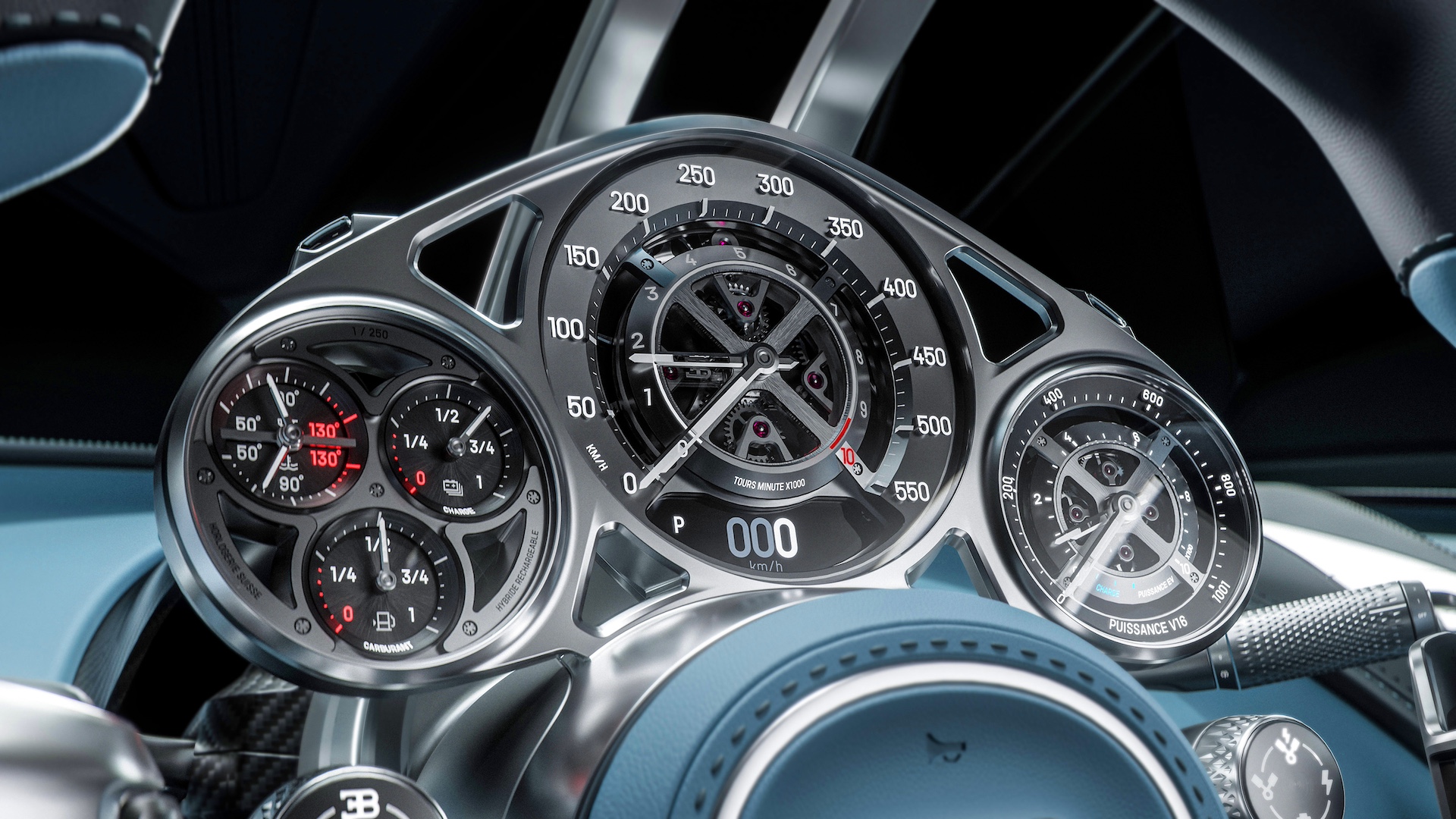
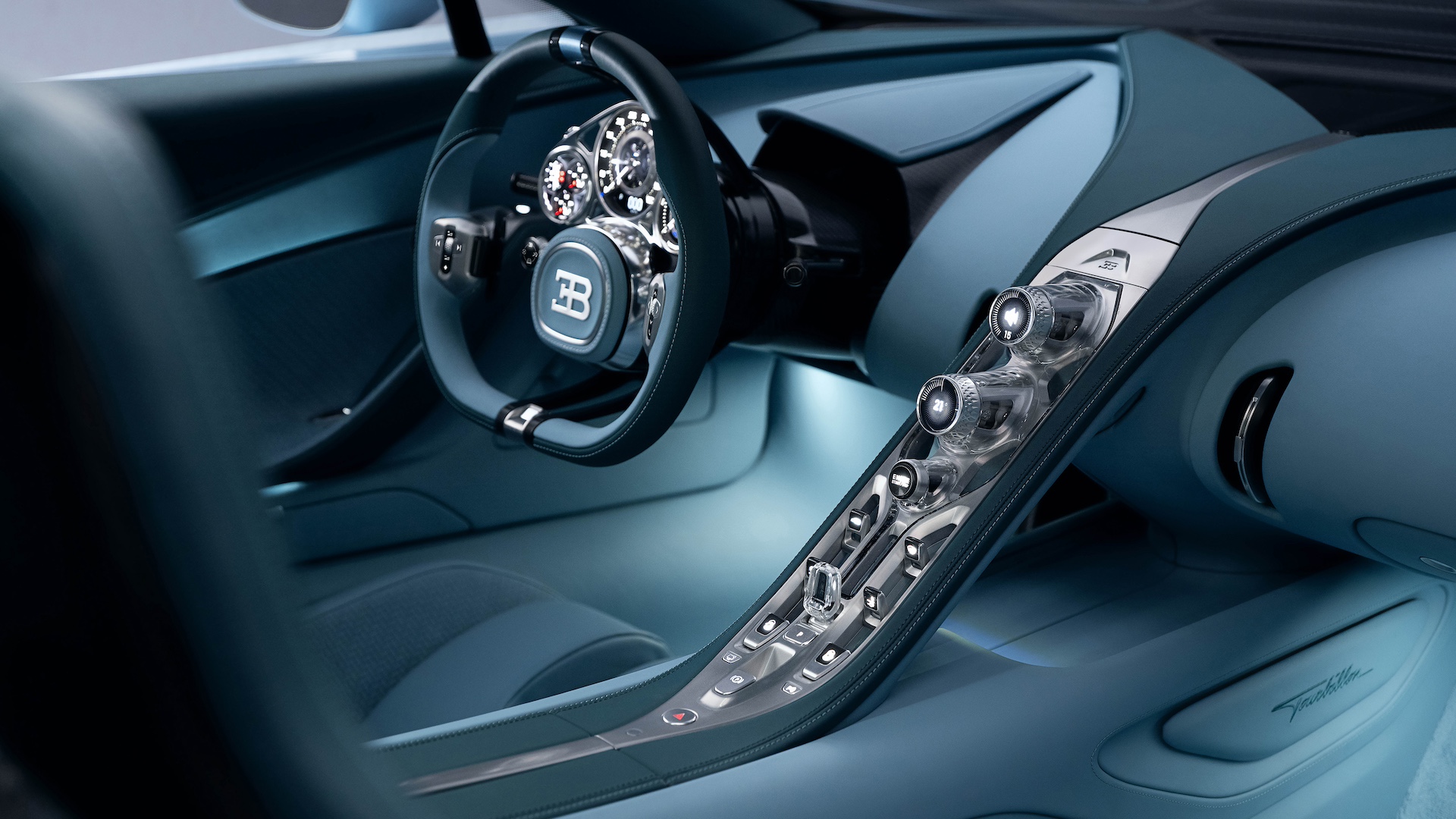
Clearly railing against the current trend for over-digitization, Bugatti has roped in the help of luxury Swiss watchmakers to take care of the fantastically exposed mechanical instrument binnacles.
Three dials greet the driver, with the centre-most comprising a two needle set-up that details current speed and engine revs. These needles are operated by the visible mechanical mechanism, just like in your favorite Hublot or Richard Mille timepiece.
On the right, there’s another beautiful dial that again comprises two needles that reveal the current power output of the combustion engine and the electric powertrain. Combine these two figures and you have current total power output.
Finally, the binnacle on the left takes care of the everyday stats, such as the current state of battery charge, oil temperature and fuel levels. But again, it’s all taken care of in a beautifully analogue way.
Even the start up procedure is pure theatre, with a push button in the centre console, itself hewn from machined crystal glass, initiating the electric propulsion system, allowing drivers to creep away silently.
To wake the V16, the driver pulls an organ stop lever (like an old choke), while various dynamic settings can then be tweaked via knurled rotary dials on the steering wheel.
Just when you think Bugatti may have run out of party tricks, said steering wheel revolves around fixed central boss thanks to an in-built planetary gearbox, so those hand-crafted analogue dials always stay fixed in the same central position.
Mate Rimac explains that even though he would have been keen to keep the Tourbillon interior screen-free, it is impossible to produce a modern car without one for safety reasons. The solution? A small display elegantly rises from the centre console in portrait orientation, before rotating 90-degrees and resting in place.
From here, well-heeled owners can make the most of Apple CarPlay and Android Auto for any navigational duties, or make it disappear completely so it doesn’t spoil the clockwork ambience.
No expense spared






Limited to just 250 units, with around 80 being built per year starting in 2026, prices are expected to be well in excess of $4 million (it starts at £3.2m / over AU$6m).
Understandably, there is excess in every nook and cranny. The hinges that operate the deep ‘frunk’, for example, are made from machined aluminum and deserve their own moments of appreciation.
The dihedral doors are electrically operated, so open and close with precision theatre no matter what the ambient temperature is doing. Inside, the leather-clad seats are fixed to keep the overall packaging and drag co-efficient of the exterior low, but the driver gets comfortable thanks to electronically adjustable pedals and steering wheel.
Many of the parts that will never been seen, including those that make up the suspension and chassis components, are 3D-printed in aluminum using expertise from Divergent, the sister company to US super car tech start-up Czinger.
These sinewy, organic structures not only save weight, but also ensure structural rigidity and performance.
Most other manufacturers have dreamed of using these innovative production methods, but it’s just too damned expensive. Bugatti, on the other hand, seemingly had a blank cheque.
The Tourbillon story is far from over, as first deliveries for some customers may come as late as 2030. In that time, it is highly likely it will set another top speed record, proving that the humble combustion engine still has life in it yet.
You might also like

Leon has been navigating a world where automotive and tech collide for almost 20 years, reporting on everything from in-car entertainment to robotised manufacturing plants. Currently, EVs are the focus of his attentions, but give it a few years and it will be electric vertical take-off and landing craft. Outside of work hours, he can be found tinkering with distinctly analogue motorcycles, because electric motors are no replacement for an old Honda inline four.
